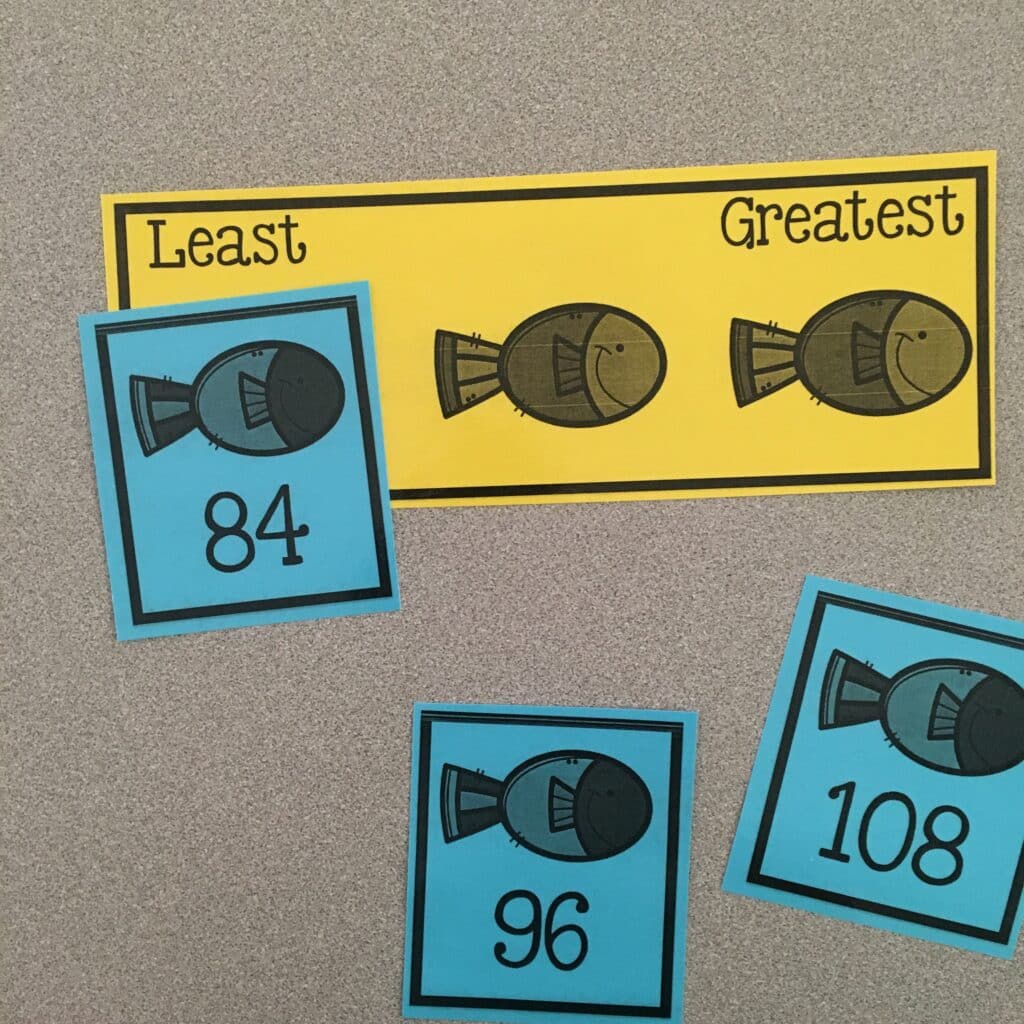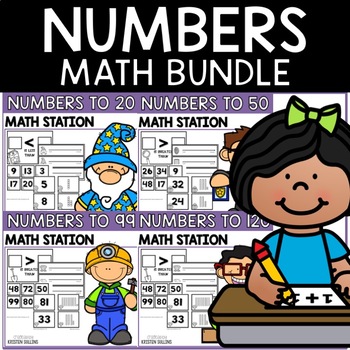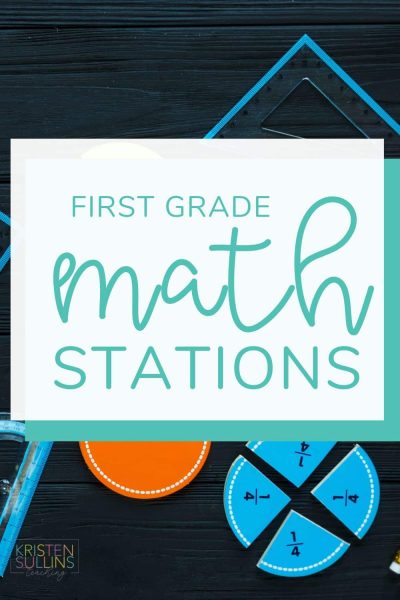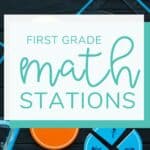Just like with literacy centers, math centers are a great place for students to work independently, or collaboratively, on skills that have been previously taught.
Students are able to take what they have learned and develop a more sound understanding of different concepts and skills through center work.
Centers are also a great way for teachers to provide meaningful work-time that gives them the freedom to have targeted math groups.
Providing students with one-on-one and small group math instruction is so important and center time is a great time for this.
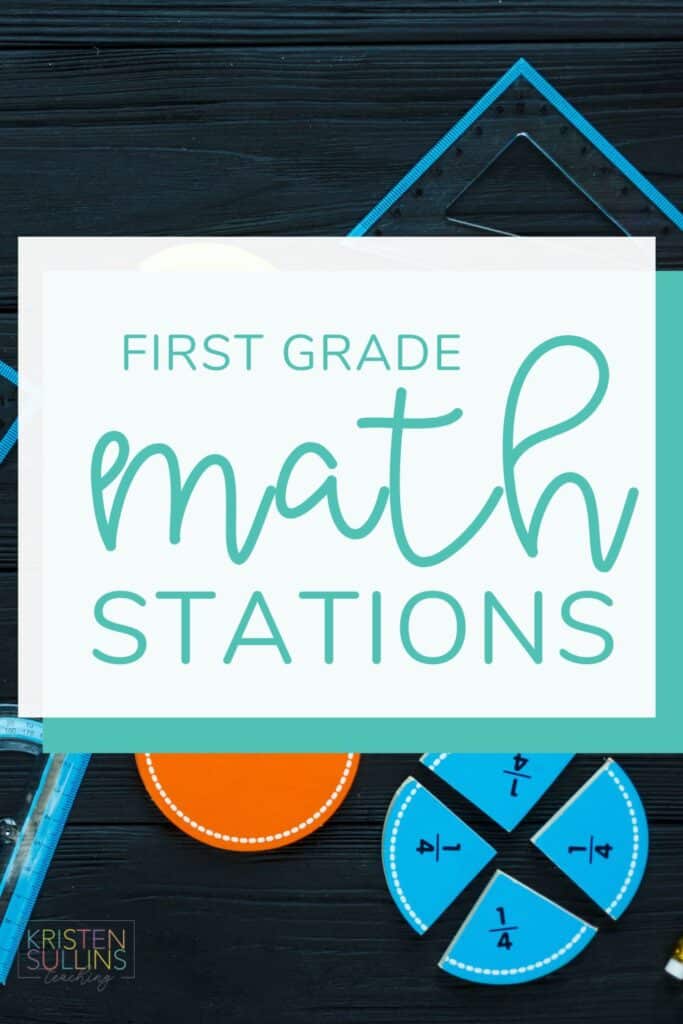
How to Set Up Math Centers in First Grade
Just like with literacy centers, setting up math centers can seem daunting! I prefer to run my math centers like my literacy centers (see my How to Start Literacy Stations post for more info on my literacy stations). I typically stick with traditional stations, where students rotate from one to another. I keep my template the same for both math and literacy stations to provide consistency for students.
Step 1: Select your Style
My style is more traditional, but another way to go about it is where students have things they must complete and then can choose a center after that. Some call this a must do/may do style.
Both styles have their pros and cons, so you have to decide what would work best for you in your classroom. I have done both styles, and have found that the traditional style is what works best for me, at least at the beginning of the year. As the year progresses, there have been years where I have switched styles because students are more responsible, especially with time management, and I like to provide them with that choice.
Step 2: Choose your Centers
There are SO many amazing math center ideas out there, but something to really think about is the content of the center. You want to make sure each center is providing students with meaningful work, not busy work. It is also key to be providing students with activities that are engaging and can be completed independently. Every classroom has students with varying abilities, centers need to be a time where every student is able to practice concepts already taught. Centers should never be a place where students are learning something new.
Here are my go-to centers:
- Math Games (individual or partner)
- Math Fluency Practice
- Technology (our district has Prodigy & BigBrainz which we use for our math time)
- Pocket Chart Activities
- Daily Math Worksheet or a Math Journal
Changing out centers can be another daunting task, and finding a rhythm is key. Most of my stations don’t change often. I will add in new items and new skills/concepts that are being taught, but I don’t always remove previous items. I like for students to have choices in each center. This is not the case with the worksheet or journal, however. I do change these out every other day (my stations last two days with a day 1 rotation and a day 2 rotation).
I am typically not a big fan of worksheets, but with math it is important for students to be provided with math work that is realistically what they will see as they progress through school. Math assessments and other state/nation-wide tests will not be done with a dry-erase marker on a desk. I do not believe in catering to assessments, but I also want my students to be comfortable with this style.
What if they finish their math center before it is time to rotate?
You need to have a plan for this. Each center should have tasks that will take up most of the time, but as we know, there are those students who can FLY through a math activity or worksheet. Having a plan for these students is key. I have STEM bins in my classroom that students go to once they have completed their center work.
Here is a quick run-down on what they are required to do with these STEM bins:
- Create a structure or object
- Draw a picture of it
- Write how they constructed it
Step 3: Get Started
Now that you have your centers ready, and a backup plan for early-finishers, it is time to implement your centers. I introduce ONE center at a time using the I do/We do/You do model. I want students to have a solid understanding of where the center is, what their expectations are at that center, and how to clean-up and switch. We create a center mini-chart, just like we did with our literacy stations, so students know what is expected at each center.
Once all centers have been introduced, I jump right into our center rotation schedule. I have found that by just going for it and ripping that bandaid off, we are able to start centers a lot quicker. And the sooner centers get rolling, the sooner I can start working with students in targeted math groups!
Math Station Tip 1: Be Consistent
Consistency is key, especially in the early primary grades.
You want to make sure students are getting meaningful math practice at their centers where they are not only engaged but developing/honing in on a variety of math skills and concepts.
Once your centers are up and running, you may find some things just aren’t working and will have to make adjustments. That is just fine!
But make sure when you do make these changes, students are involved. I always let my kiddos know, “Hey, I’ve noticed this center just really isn’t working for our class. That’s OK! But I’m going to switch it up. Here is what we are going to do…”.
I want them to be aware of WHY I am changing it and then make sure I spend the time showing them how the new center is going to run.
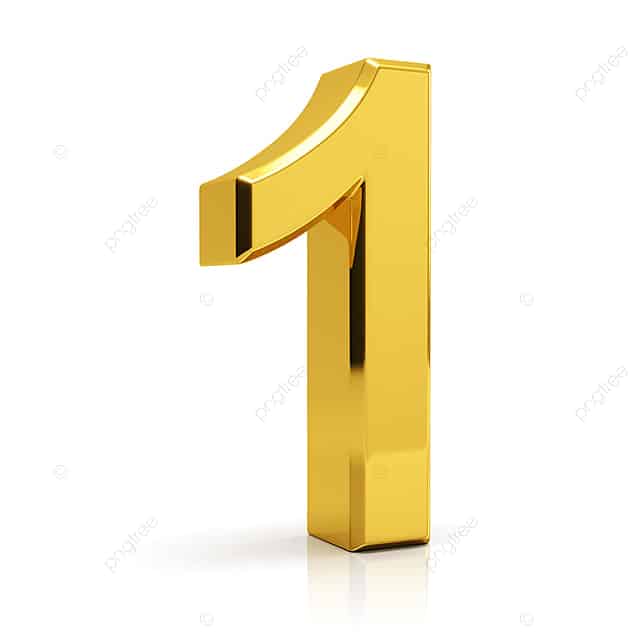
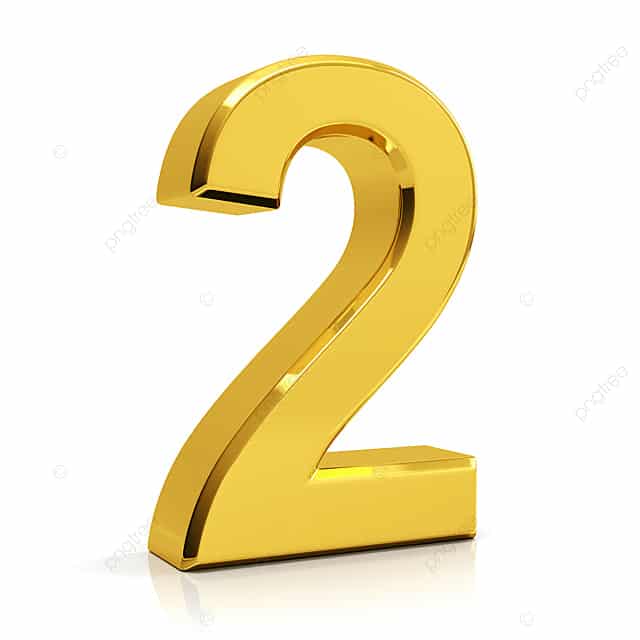
Math Station Tip 2: Start Simple
Right out of the gate, you want to make sure the center work is something ALL students are able to do.
I typically group my students by mixed-ability so they are able to get help from another student in their group if need be, but I don’t want this to be something that happens often.
In the beginning, I especially want all students to be able to complete the center work independently.
What is the Teacher Doing During Math Stations?
I have two goals for math centers:
- Students are engaged in meaning math practice
- Students are working with me on targeted math skills
And that's it! As long as I am providing my class with meaningful work, I feel confident in leaving them while I take the time to focus on individual students and small groups. My targeted math time is always changing. My groups are very fluid. They have to be! Some students who may have a solid understanding of addition and subtraction may completely struggle with place value. I create targeted groups based on formal and in-formal math assessments. These groups may stay the same for many weeks, or may change week-to-week (even day-to-day!). As teachers we have to be flexible right?
Once you get your math centers up and running, you will be amazed at how much you and your students can accomplish in a short amount of time. In the primary grades, we are building the foundation for all math skills students will learn. So remember, what you teach is important!
First Grade Math Stations
This bundle includes ALL of the math stations you need to help your students master building, comparing and ordering numbers from 1-120! Students must order numbers on an open number line, identify place value and determine greater than, less than, or equal to using comparative symbols.
This resource can be used to:
-whole group review of numbers to 120
-application in small group instruction
-engagement in a hands-on math center


